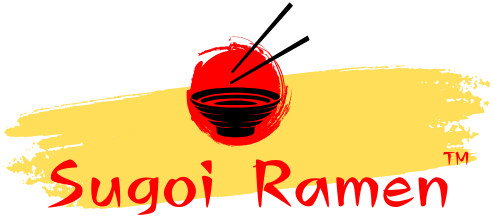When it comes to quick, delicious, and convenient meals, Maggi vs Ramen often becomes a popular debate among noodle enthusiasts. While both these options are loved worldwide, they cater to different tastes, origins, and culinary experiences. In this comprehensive guide, we delve into the essential differences between Maggi and Ramen, analyzing everything from their history and preparation methods to nutritional value and cultural significance.
The Origins of Maggi and Ramen

The History of Maggi
Maggi, a household name, originated in Switzerland in the late 19th century. Created by Julius Maggi, it was initially marketed as a quick and nutritious meal solution for working families. Over the decades, Maggi noodles have expanded their presence globally, particularly in Asia, where they have become a staple in many households.
The History of Ramen
In contrast, Ramen hails from Japan and has its roots in Chinese cuisine. Initially introduced to Japan in the early 20th century, Ramen has evolved into a cultural icon, offering a rich variety of regional flavors and styles. Today, Ramen represents a complex culinary tradition that ranges from instant varieties to gourmet dishes served in specialized restaurants.
Key Differences Between Maggi and Ramen
1. Ingredients and Flavor Profiles
- Maggi:
Maggi noodles are typically made from wheat flour, palm oil, and seasoning powders. The flavors are often designed to be mild and universal, appealing to a wide audience. Popular variations include curry, masala, and chicken. - Ramen:
Ramen noodles are crafted from wheat flour, salt, and kansui (alkaline water), which gives them their characteristic texture and chewiness. The flavor profiles of Ramen are much more diverse, ranging from miso and shoyu (soy sauce) to tonkotsu (pork bone broth).
2. Preparation Styles
- Maggi:
Maggi is known for its simplicity. Typically, it is cooked by boiling the noodles in water, adding the flavor sachet, and serving in under five minutes. Some regions add their twist, incorporating vegetables, eggs, or spices. - Ramen:
Ramen preparation involves intricate techniques. While instant Ramen is quick, authentic Ramen requires making the broth from scratch, simmering ingredients like pork bones, chicken, or vegetables for hours. Toppings such as boiled eggs, nori (seaweed), and sliced pork elevate the dish further.
3. Nutritional Content
- Maggi:
Maggi is designed as a quick snack rather than a balanced meal. It often contains high levels of sodium and carbohydrates, with minimal protein or fiber. Healthier versions are now emerging, offering whole-grain or reduced-sodium options. - Ramen:
Ramen varies widely in nutritional content depending on the type. Instant Ramen shares similarities with Maggi in being high in sodium. However, traditional Ramen, with its protein-rich broths and fresh toppings, can offer more balanced nutrition.
Cultural Significance of Maggi and Ramen

Maggi: A Global Favorite
Maggi has cemented its place as a comfort food worldwide. In countries like India, it is more than just a snack—it’s an emotion. Students, working professionals, and even travelers rely on Maggi for its affordability, ease, and consistent taste.
Ramen: A Japanese Culinary Art
Ramen holds a prestigious spot in Japanese cuisine. Beyond being a meal, Ramen is an art form, with chefs dedicating years to mastering its preparation. Ramen festivals, themed restaurants, and even museums celebrate its cultural importance.
Maggi vs Ramen: Versatility in Usage
Maggi Recipes
Maggi’s adaptability makes it a versatile ingredient. Creative recipes like Maggi Bhel, Maggi Pizza, and Maggi Noodles Stir-fry are popular, showcasing its potential beyond being a simple bowl of noodles.
Ramen Recipes

Ramen’s versatility shines in its ability to blend traditional and modern flavors. From fusion dishes like Ramen Burgers to elaborate gourmet presentations, it remains a canvas for culinary innovation.
Instant vs. Traditional: A Deep Dive
Maggi: The Instant Wonder
Maggi thrives as an instant solution for those short on time. Its pre-packaged seasoning simplifies the cooking process, ensuring a reliable taste every time.
Ramen: From Instant to Authentic
While instant Ramen shares similarities with Maggi, traditional Ramen offers a vastly different experience. The depth of flavors in authentic Ramen is unparalleled, often requiring hours of preparation and a blend of carefully selected ingredients.
Price and Accessibility
- Maggi:
Maggi’s affordability and widespread availability make it a go-to option for many. Its presence in supermarkets, corner stores, and even rural areas highlights its universal appeal. - Ramen:
Ramen can range from budget-friendly instant packs to high-end restaurant meals. The accessibility of Ramen largely depends on the type and location, with authentic Ramen often being a pricier option.
Healthier Choices: Maggi vs Ramen
The growing demand for health-conscious foods has led both Maggi and Ramen brands to innovate:
- Maggi: Whole grain noodles, reduced-sodium variants, and fortified options cater to health-conscious consumers.
- Ramen: Gluten-free noodles, vegan broths, and organic ingredients are gaining traction in the Ramen market.
Conclusion: Maggi or Ramen—Which One Wins?
The Maggi vs Ramen debate ultimately boils down to personal preference. Maggi excels as a quick, affordable, and universally loved snack, while Ramen offers a richer, more diverse culinary experience. Both have their unique strengths, catering to different needs, tastes, and occasions.
FAQ’s
Q1. Is Maggi healthier than Ramen?
Maggi and Ramen both have healthier options available, but their instant versions are typically high in sodium and carbs. Choose whole-grain or reduced-sodium varieties for better nutrition.
Q2. Can Ramen be made as quickly as Maggi?
Instant Ramen can be prepared quickly, but traditional Ramen requires more time and effort due to its complex preparation methods.
Q3. Are Maggi and Ramen gluten-free?
Standard Maggi and Ramen are not gluten-free, but gluten-free versions are available for both.
Q4. Why is Ramen more expensive than Maggi?
Ramen’s higher cost can be attributed to its diverse ingredients, complex preparation, and premium restaurant offerings.
Q5. Which is better for students: Maggi or Ramen?
Maggi is often preferred by students for its affordability and convenience, but instant Ramen offers a slightly more diverse taste profile.







